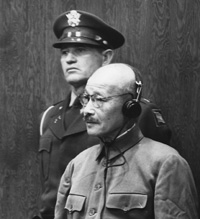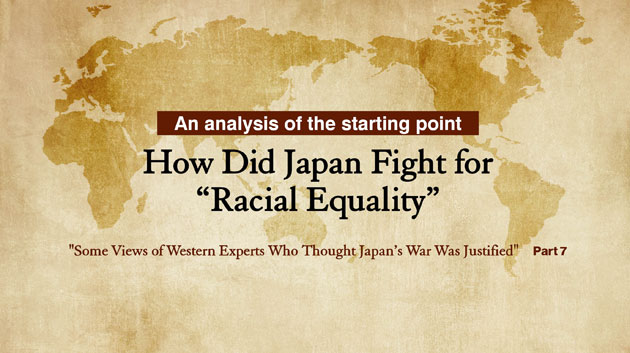An analysis of the starting point How Did Japan Fight for “Racial Equality”?
"some View of Western Experts Who Thought Japan's War Were Justified" Part 7

Hideki Tojo shaking hands with various representatives from each nation at the Greater East Asia Conference
Nazi Germany was said to have massacred 6 million Jews.
At the time, however, many Western nations not only failed to protect the Jews, but actively aided and abetted their persecution. In America, for example, the coast guard refused entry and turned back a boat carrying 930 Jewish exiles, and many of them ended up in concentration camps. Britain had also limited Jewish immigration to Palestine in the Middle East.
On the other hand, Japan took the initiative to embody the spirit of “racial equality”, and took steps to “protect the Jews”. Apart from the episode that Rabbi Tokayer discussed in his interview, there is also the historical fact that the head of the Navy, Koreshige Inuzuka, allowed 30 thousand Jewish exiles asylum in Shanghai. The diplomat, Chiune Sugihara, who gave visas (the “visa of life”) to 6 thousand Jews in Lithuania, is also well known. This too was in line with the official policy of the nation (note).
(Note) The Foreign Ministry ordered Chiune Sugihara to limit the issuing of visas, but it was strictly for administrative reasons. It was not that the government opposed aiding the Jews.
Japan Was the First to Call for the “Abolition of Racial Discrimination”
Japan was also the first nation in the world to call for “racial equality” at an international conference. Twenty years before the War, in 1919, at the Versailles Conference (the Paris Peace Conference) where international order was being discussed after the First World War, the Japanese ambassador, Nobuaki Makino, called for a “racial equality clause” to be included in the League of Nations constitution. He argued that “racial and religious strife had become the source of conflicts and wars”, and was able to get 11 out of 16 votes.
However, the chairman, the American President Wilson, overturned the proposal claiming that the ratification of such a clause should require a unanimous vote. For the West, who had oppressed and exploited colored peoples, the idea of “racial equality” was inconvenient and unrealistic.
“Japan Is the Light of Hope in the World”
In 1943, Japan had joined hands with Asian countries to realize the great cause of “liberating Asia from the white man’s rule”, and held the world’s first summit of colored peoples, the “Greater East Asia Conference”, in Tokyo.
Most of the representatives from the 7 nations that had gathered were leaders who fought to gain independence from Western colonial rule for their respective countries with Japan’s assistance, such as India’s Chandra Bose and Burma’s Ba Maw.
Each gave a passionate speech. The chairman, Hideki Tojo, declared that “the Greater East Asia War is a righteous crusade”. Chandra Bose praised Japan as “the light of hope in the world”.
An important point to be highlighted was the point Tojo made repeatedly at the conference, for Asian countries to henceforth “respect each other’s independence”, and that “we are fundamentally different from the old order that would victimize other ethnicities and nations for the prosperity of one’s own”. In other words, rather than oppressing Asian nations, Japan’s banner was one of “respecting different ethnicities”.
Indeed, Japan brought Asia’s post-war liberation into realization. The “father of racial equality”, the late former South African President Nelson Mandela stated, “I was moved by Japan in the Greater East Asian War. I want to go to Japan. I want to meet the emperor.”
The “universal brotherhood” Japan called for, is the ideal of racial equality. The Japanese Army fought with their lives for this ideal.



















